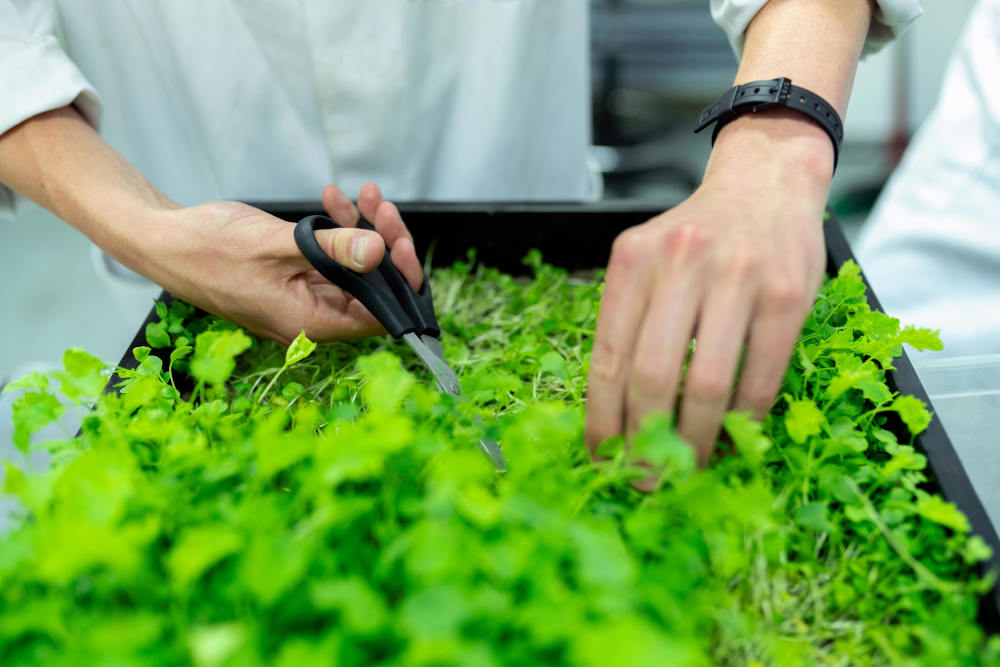
Growing herbs from seed is an affordable and rewarding way to start your own herb garden. But in USDA hardiness zone 5, where winters are long and frosts linger into spring, timing is everything. Starting herb seeds indoors gives you a head start on the growing season, but knowing exactly when to begin is the key to success.
In this article, we’ll explain when and how to start popular herb seeds indoors in zone 5, taking into account the average last frost date, individual herb germination times, and best practices for healthy transplants.
Panaprium is independent and reader supported. If you buy something through our link, we may earn a commission. If you can, please support us on a monthly basis. It takes less than a minute to set up, and you will be making a big impact every single month. Thank you!
Understanding Zone 5 Climate
Zone 5 includes parts of the Midwest, Northeast, and mountainous regions in the U.S. It’s defined by average minimum winter temperatures between -20°F and -10°F (-29°C to -23°C).
The average last frost date in zone 5 typically falls between April 15 and May 15. This date is important because most herbs are sensitive to frost and need to be transplanted after danger of frost has passed.
Why Start Herbs Indoors?
Herbs are generally slow-growing, and starting them indoors offers several benefits in zone 5:
-
Extends the growing season
-
Provides controlled conditions for better germination
-
Reduces the risk of frost damage
-
Gives seedlings a strong start before transplanting outdoors
Some herbs, like basil and rosemary, are particularly sensitive to cold and benefit greatly from indoor starting.
Key Factors That Determine Start Time
Before you grab your seed packets, consider these factors:
-
Germination Time – How long it takes for seeds to sprout.
-
Growth Rate – How quickly the seedlings grow to transplant size.
-
Frost Sensitivity – Whether the herb can survive a light frost.
-
Indoor Conditions – Availability of light, warmth, and humidity.
For zone 5, most herb seeds should be started 6 to 10 weeks before the average last frost date.
Indoor Start Times for Popular Herbs in Zone 5
Here’s a handy guide to common culinary and medicinal herbs, with recommended indoor sowing times based on a May 1 last frost date (average for zone 5):
| Herb | Weeks Before Last Frost | Start Indoors | Notes |
|---|---|---|---|
| Basil | 6–8 weeks | March 5–19 | Needs warmth; avoid cold soil |
| Parsley | 8–10 weeks | Feb 19–March 5 | Slow germination |
| Cilantro | Direct sow preferred | N/A | Doesn’t transplant well |
| Thyme | 8–10 weeks | Feb 19–March 5 | Very slow-growing |
| Oregano | 8–10 weeks | Feb 19–March 5 | Needs light to germinate |
| Sage | 6–8 weeks | March 5–19 | Likes warm soil |
| Chives | 8–10 weeks | Feb 19–March 5 | Easy to grow indoors |
| Rosemary | 10–12 weeks | Feb 5–19 | Very slow to germinate |
| Dill | Direct sow preferred | N/A | Doesn’t transplant well |
| Lavender | 10–12 weeks | Feb 5–19 | Needs cold stratification |
| Mint | 8–10 weeks | Feb 19–March 5 | Spreads easily outdoors |
| Tarragon | 8–10 weeks | Feb 19–March 5 | Start from root divisions if possible |
| Lemon Balm | 6–8 weeks | March 5–19 | Can become invasive |
🌿 Tip: Use a soil thermometer and transplant herbs outside only when soil temps are consistently above 50–60°F (10–15°C), depending on the herb.
Step-by-Step Guide to Starting Herb Seeds Indoors
1. Gather Supplies
-
Seed starting trays or small containers
-
Seed starting mix (light and well-draining)
-
Grow lights or a sunny windowsill
-
Heat mat (for warmth-loving herbs)
-
Humidity dome or plastic wrap (to retain moisture)
2. Prepare the Soil
Moisten the seed starting mix before filling containers. It should feel damp like a wrung-out sponge—not soggy.
3. Plant the Seeds
-
Follow the depth instructions on the seed packet.
-
Some herbs (like oregano and thyme) need light to germinate—don’t cover them with soil.
-
Label your containers!
4. Provide Warmth
Keep soil temperature between 65°F and 75°F (18–24°C). Use a heat mat for slow germinators like rosemary and lavender.
5. Maintain Humidity
Cover trays with a humidity dome or plastic wrap until germination. Then, remove the cover to prevent mold.
6. Provide Adequate Light
Seedlings need 12–16 hours of bright light daily. Use grow lights if natural sunlight is insufficient.
7. Water Gently
Water from the bottom or use a spray bottle to avoid disturbing seeds. Keep the soil moist but not waterlogged.
8. Thin Seedlings
Once seedlings have 1–2 sets of true leaves, thin them out to avoid overcrowding. Keep the strongest one in each cell or pot.
When to Transplant Outdoors
After the last frost date has passed (around May 1 in zone 5), harden off your seedlings over 7–10 days by gradually exposing them to outdoor conditions. Then transplant them into the garden or containers when:
-
Daytime temps are consistently above 60°F (16°C)
-
Nighttime temps are above 50°F (10°C)
-
Seedlings are strong with at least 4–6 true leaves
Herbs Best Direct-Sown in Zone 5
While many herbs benefit from an indoor start, a few do better when sown directly into the garden after the last frost:
-
Cilantro – bolts quickly in heat; prefers cool soil
-
Dill – has a long taproot; dislikes transplanting
-
Borage – grows fast and prefers direct seeding
-
Chamomile – reseeds easily and does well direct-sown
-
Fenugreek – easy to grow directly in soil
Wait until mid-May to early June to sow these directly outdoors in zone 5.
Common Mistakes to Avoid
-
Starting too early
Plants can become leggy and root-bound indoors if they outgrow their containers before transplanting. -
Overwatering
Damp conditions without airflow invite fungal diseases like damping off. -
Insufficient light
Weak, spindly plants result from low light. Use grow lights if needed. -
Skipping hardening off
Seedlings can go into shock when suddenly exposed to outdoor conditions. Gradual exposure is essential.
Indoor Herbs You Can Grow Year-Round
Some herbs thrive indoors year-round, even in zone 5. Consider growing these on a sunny windowsill:
-
Basil
-
Chives
-
Mint
-
Parsley
-
Oregano
-
Thyme
With good light and regular watering, you can enjoy fresh herbs even during winter.
Final Thoughts
In zone 5, starting herb seeds indoors is a smart strategy to get a jump on the growing season. The key is to time your seed-starting 6–10 weeks before the last expected frost, which generally falls in early May. Start slow-growing herbs like rosemary, parsley, and lavender earlier, and save warm-weather herbs like basil and sage for a bit later.
With the right timing, care, and setup, your herbs will be thriving indoors before it's even warm enough to step outside. Then, once the frost risk has passed, you'll have a lush and flavorful herb garden ready to flourish all summer long.
Was this article helpful to you? Please tell us what you liked or didn't like in the comments below.
About the Author: Alex Assoune
What We're Up Against
Multinational corporations overproducing cheap products in the poorest countries.
Huge factories with sweatshop-like conditions underpaying workers.
Media conglomerates promoting unethical, unsustainable products.
Bad actors encouraging overconsumption through oblivious behavior.
- - - -
Thankfully, we've got our supporters, including you.
Panaprium is funded by readers like you who want to join us in our mission to make the world entirely sustainable.
If you can, please support us on a monthly basis. It takes less than a minute to set up, and you will be making a big impact every single month. Thank you.































0 comments